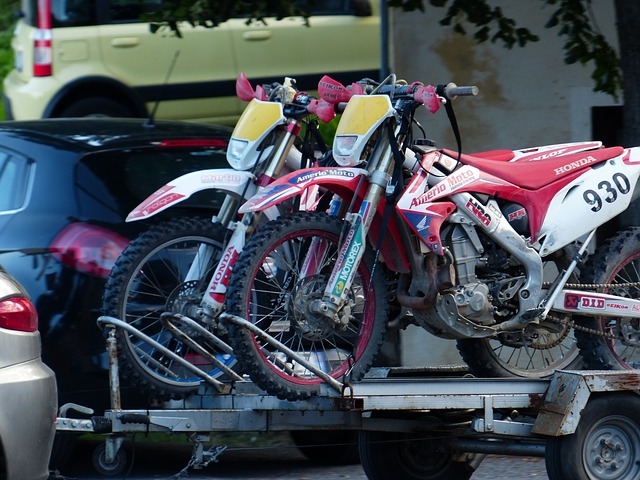As much as you enjoy riding your motorcycle, there may come a day when you need to secure it to a trailer rather than ride it. Perhaps you are traveling with a group, your bike is in need of repairs, or you want to travel in a larger vehicle but ride your motorcycle at your destination. Whatever the reason, it’s critical to secure your motorcycle to a trailer carefully to avoid damage to your bike.
Here are 9 tips you should know before you attempt to secure your motorcycle to a trailer for transport.
1. Don’t go it alone. Sure, it’s possible to load your motorcycle yourself, but this task works better if you have an extra set of hands. You don’t want to take any chances of damaging your motorcycle, especially if it’s your first time putting it on a trailer.
2. Make sure your trailer is adequate to hold your bike – before you load it. Although it seems like common sense, some people naturally assume their bike will fit and then find out otherwise. You don’t want your motorcycle overhanging your trailer.
3. A set of wheel chocks is great and will provide additional support, especially as you secure your bike in place.
4. Use ratchet straps or tie downs to secure your bike. You’ll need four to adequately strap it down. Be sure to check out the manufacturer’s rating before you purchase your straps. You’ll need a rating that is adequate enough to secure your motorcycle in place. This is one area you don’t want to go cheap.
For a free legal consultation,
call 1-800-668-6729
5. The straps should go on the front and back of your bike at approximately a 45 degree angle. Secure the bike using the frame, trying to avoid the handlebars, if possible. Avoid strapping the mirrors, exhaust, pannier bags, or top case. Also, make sure your straps don’t apply any force against any accessories on your bike.
6. Check to make sure that your bike is secured to structural members of the truck’s body. The securement point has to be able to support the bike.
7. Compress the front suspension, but leave a bit of play. You’ll likely hit some bumps in the road, and having a bit of give in the suspension of your bike is a good thing. You just don’t want so much movement that the straps begin to loosen.
8. Avoid any hydraulic lines or any other cables. If the straps compress these, they can easily be destroyed.
9. Once your bike is fully secured, give it a couple good shakes. It should hold firmly with very little, if any, movement.
Now that your bike is secure, you are free to travel knowing you will arrive safely, with no damage done. For more tips on how to travel with your motorcycle, whether riding or towing, check out our Kass & Moses Motorcycle blog.
Call or text 1-800-668-6729 or complete a Free Case Evaluation form


